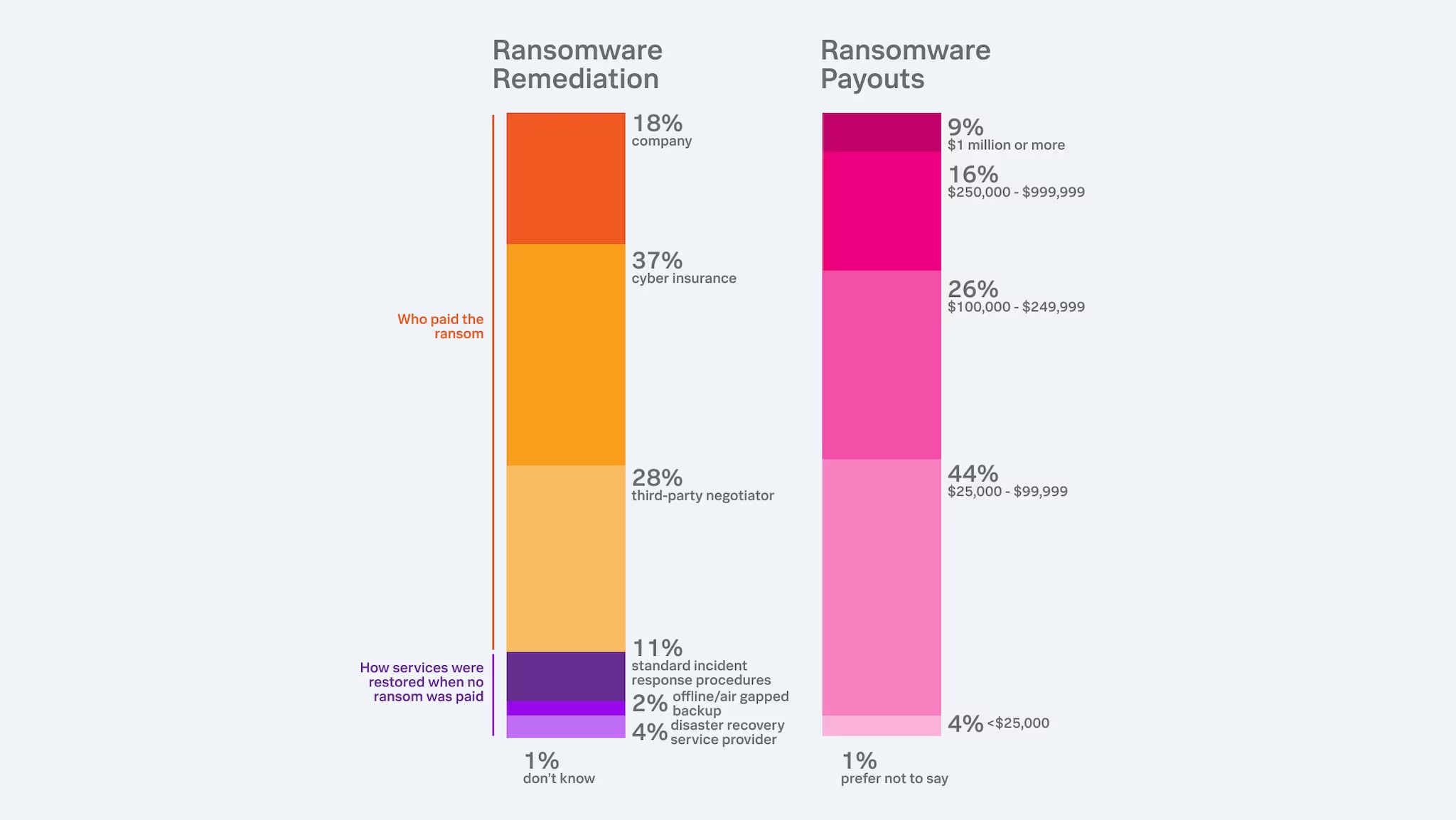CISOs are keenly aware of the risks; the majority (69%) maintain that paying a ransom makes them vulnerable to legal exposure in the future. Those that pay likely do a cost- benefit analysis, and conclude that the risk is worth making the threat disappear and avoiding exposure. Yet even after payment, organizations are often unable to fully recover their lost capabilities — there’s no honor among thieves. And cyber insurance is no silver bullet; 62% say it doesn’t cover them in a ransomware situation. It’s also difficult to obtain and, when it does apply, often falls short of full reimbursement.
A strategic approach to cyber defense
Don’t think boards aren’t watching. Seventy-three percent of CISOs say they feel that their governing body/board of directors is overly concerned about ransomware and the potential threat it poses to their organization. And the majority of CISOs (71%) say that when they faced successful ransomware attacks, the governing body/board required regular updates as they sought to resolve the issue. That scrutiny likely won’t go away anytime soon.
For CISOs, effectively addressing ransomware will require a more strategic, proactive, and thorough approach to cyber defense (read: check, double-check and triple check your systems). While there are no guarantees, you can put the odds in your favor by making sure you have offline, regularly-tested, segregated back-ups. Designate maintenance responsibility, do tabletop exercises to practice your response plans and conduct regular checks to ensure backups are successful.
It will also behoove CISOs to run board-level exercises to exert some real-yet-safe pressure on those systems. Bring threat scenarios up often and early with your board and leadership — as well as with your security teams. And when you are faced with an actual ransomware threat, have the requisite incident management practices and protocols in place to ensure everything runs smoothly without resorting to panic mode.
Meanwhile, CISOs and their teams have cited gaps within security controls (29%), incident response and/or communications process issues (29%), and gaps within data sources used for security monitoring (28%) as the primary reasons for their most disruptive breaches of all kinds. On a more optimistic note, however, these gaps also will lead to increased opportunities to invest in better and more comprehensive monitoring across your organization.
It’s safe to say that ransomware isn’t going away anytime soon. It will evolve, and already is evolving into new and more destructive iterations. But part of the resilience journey is simply being prepared. And CISOs will also be able to leverage its inevitable presence to better educate their leadership and board, promote best security practices throughout their organization, and ensure sustained security investments in the future.
For more insight on how fellow cybersecurity leaders today are thinking about ransomware, AI, boardroom communication and more, read the full CISO Report.






